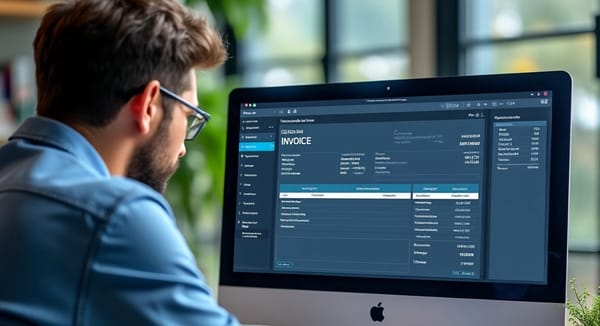How to Read a Balance Sheet: A Quick Guide
A balance sheet is a financial statement that provides a snapshot of a company’s financial condition at a specific point in time. It is divided into three main sections: assets, liabilities, and equity. Understanding how to read a balance sheet is crucial for investors, creditors, and anyone interested in the financial health of a business.
Components of a Balance Sheet
1. Assets:
- Current Assets: These are assets that are expected to be converted into cash or used up within one year. Common current assets include:
- Cash and Cash Equivalents: The most liquid assets.
- Accounts Receivable: Money owed to the company by customers (also called Debtors in the UK)
- Inventory: Goods available for sale.
- Prepaid Expenses: Payments made in advance for services to be received.
- Non-Current Assets: These are long-term investments that are not expected to be converted into cash within a year. They include:
- Property, Plant, and Equipment (PP&E): Physical assets like buildings and machinery.
- Intangible Assets: Non-physical assets such as patents and trademarks.
- Investments: Long-term investments in other companies.
2. Liabilities:
- Current Liabilities: Obligations that the company needs to settle within one year. These include:
- Accounts Payable: Money the company owes to suppliers (also called Creditors in the UK).
- Short-Term Debt: Loans and other financial obligations due within a year.
- Accrued Expenses: Expenses that have been incurred but not yet paid.
- Non-Current Liabilities: Obligations due after one year. These include:
- Long-Term Debt: Loans and financial obligations payable after one year.
- Deferred Tax Liabilities: Taxes owed but not yet paid.
3. Equity:
- Shareholder’s Equity: This represents the owners' claim after all liabilities have been settled. Key components include:
- Common Stock: Par value of issued stock.
- Retained Earnings: Cumulative earnings that have been reinvested in the business.
- Additional Paid-In Capital: The amount shareholders have invested above the par value of the stock.
Steps to Read a Balance Sheet
1. Determine the Reporting Date:
Identify the date of the balance sheet to understand the timeframe for the financial snapshot.
2. Analyze the Assets:
- Current Assets: Check the liquidity and composition. A higher proportion of cash and receivables indicates good liquidity.
- Non-Current Assets: Look for significant investments in PP&E and intangible assets, which can indicate future growth potential.
3. Examine the Liabilities:
- Current Liabilities: Assess the short-term obligations. Compare with current assets to evaluate if the company can meet its short-term debts.
- Non-Current Liabilities: Check the long-term debt levels to understand the company's leverage and future obligations.
4. Evaluate Equity:
- Look at the retained earnings to see if the company is reinvesting its profits.
- Compare total equity with total liabilities to assess the financial leverage.
Common Ratios to Look At
1. Liquidity Ratios:
Current Ratio:
$$\small Current Ratio = \frac{Current Assets}{Current Liabilities} $$
The Current Ratio, also known as the Working Capital Ratio, is a type of liquidity ratio that measures a company’s ability to pay its short-term obligations or those due within one year. A ratio above 1 indicates good liquidity.
Quick Ratio:
$$\small Quick Ratio = \frac{Current Assets - Inventory}{Current Liabilities} $$
This provides a stricter measure of liquidity by excluding inventory. Also known as the Acid-test Ratio, is a type of liquidity ratio that measures a company’s ability to meet its short-term obligations with its most liquid assets. It is an indicator of a company’s short-term liquidity position
2. Debt Ratios:
Debt-to-Equity Ratio:
$$\small Debt-to-Equity = \frac{Total Liabilities}{Total Equity} $$
The Debt-to-Equity Ratio (D/E) is a financial metric used to evaluate a company’s financial leverage. It measures the degree to which a company is financing its operations with debt rather than its own resources. It’s also a long-term risk assessment of the capital structure of a company and provides insight over time into its growth strategy. A lower ratio indicates less leverage and potentially less risk.
Interest Coverage Ratio:
$$\small Interest Coverage = \frac{EBIT}{Interest Expense} $$
The Interest Coverage Ratio (ICR), sometimes called the Times Interest Earned (TIE) Ratio, is a financial metric used to determine how easily a company can pay interest on its outstanding debt. It is a measure of a company’s financial health and creditworthiness as it measures the company's ability to meet interest payments.
3. Asset Management:
Asset Turnover Ratio:
$$\small Asset Turnover = \frac{Revenue}{Total Assets} $$
The Asset Turnover Ratio, also known as the Total Asset Turnover Ratio, is a financial metric that measures the efficiency of a company’s use of its assets to generate sales. It compares the total amount of sales (revenues) to its total assets as an annualized percentage.
4. Equity Analysis:
Return on Equity (ROE):
$$\small\ ROE = \frac{Net Income}{Shareholder's Equity} $$
The Return on Equity (ROE) is a financial performance metric that measures a company’s profitability relative to its shareholder equity. It indicates how efficiently the company utilizes shareholder funds to generate profits. A higher ROE indicates efficient use of equity to generate profits.
Example Analysis
Let's say we have the following simplified balance sheet for Company XYZ as of December 31, 2023:
Assets
- Current Assets:
- Cash: £50,000
- Accounts Receivable: £30,000
- Inventory: £20,000
- Non-Current Assets:
- PP&E: £100,000
- Intangible Assets: £10,000
Liabilities
- Current Liabilities:
- Accounts Payable: £25,000
- Short-Term Debt: £10,000
- Non-Current Liabilities:
- Long-Term Debt: £50,000
Equity
- Common Stock: £40,000
- Retained Earnings: £85,000
Analysis
- Current Ratio:
$$\small Current Ratio = \frac{50,000 + 30,000 + 20,000}{25,000 + 10,000} = \frac{100,000}{35,000} = 2.86$$
A current ratio of 2.86 suggests good short-term financial health. - Quick Ratio:
$$\small Quick Ratio = \frac{50,000 + 30,000}{35,000} = \frac{80,000}{35,000} = 2.29$$
A quick ratio of 2.29 indicates strong liquidity, even excluding inventory. - Debt-to-Equity Ratio:
$$\small Debt-to-Equity = \frac{25,000 + 10,000 + 50,000}{40,000 + 85,000} = \frac{85,000}{125,000} = 0.68$$
A debt-to-equity ratio of 0.68 indicates moderate leverage. - Asset Turnover Ratio:
Assuming Revenue for 2023 is £200,000
$$\small Asset Turnover = \frac{200,000}{50,000 + 30,000 + 20,000 + 100,000 + 10,000} = \frac{200,000}{210,000} \approx 0.95$$
An asset turnover ratio of 0.95 suggests the company generates nearly its asset value in revenue. - Return on Equity (ROE):
Assuming Net Income for 2023 is £25,000
$$\small ROE = \frac{25,000}{125,000} = 0.2 $$
An ROE of 20% indicates good profitability relative to equity.
Conclusion
Reading a balance sheet involves analyzing the components of assets, liabilities, and equity to assess the financial health of a company. By looking at key ratios and trends over time, you can gain insights into liquidity, leverage, asset management, and profitability. Always compare balance sheet figures to industry benchmarks and historical performance to get a clearer picture of the company’s financial standing.



